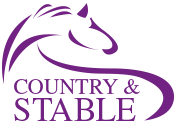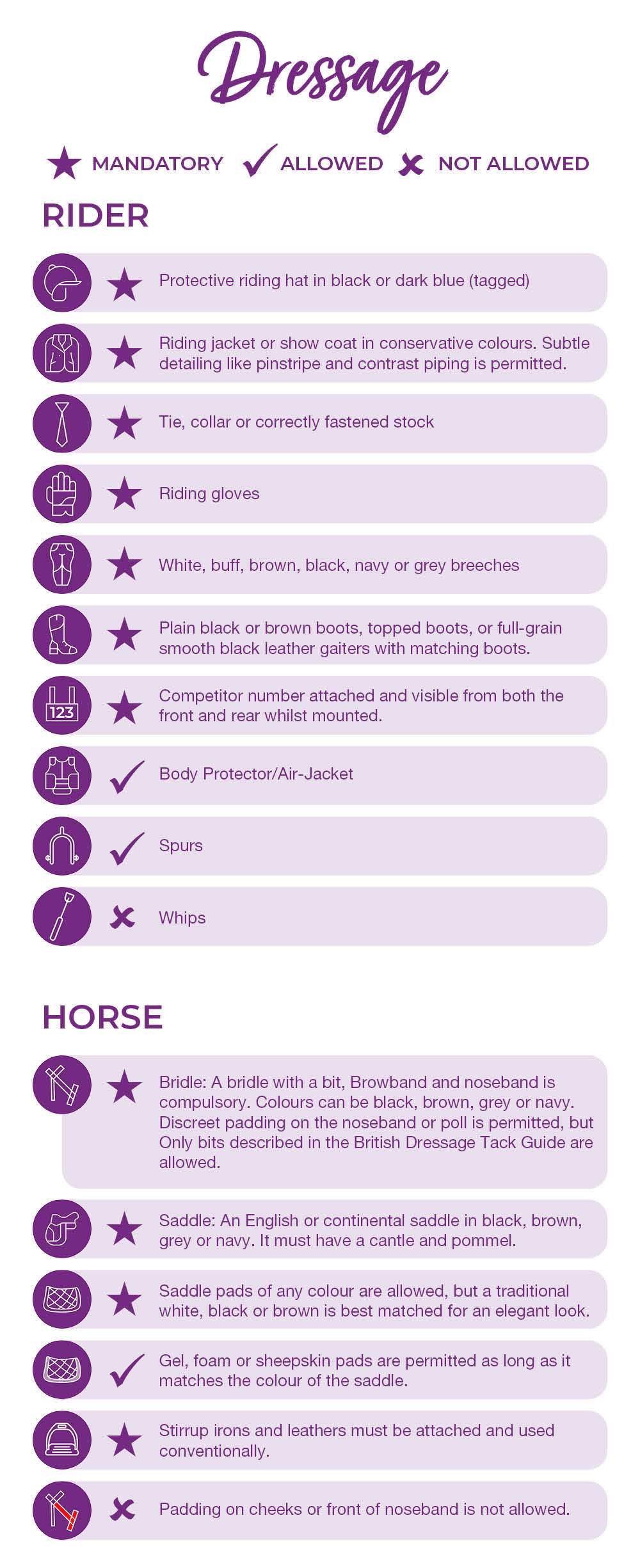What to Wear for British Eventing
Preparing for an eventing competition can be overwhelming, especially as you’re juggling three different disciplines. Our comprehensive guide will walk you through everything you need to know about what you can and cannot wear for British Eventing. Whether you're a beginner or looking for a refresher, we’ll ensure you and your horse are competition-ready!
What is Eventing?
Eventing is a three-phase equestrian competition consisting of Dressage, Show Jumping, and Cross-Country. It tests a horse’s fitness, schooling and adaptability while challenging the rider’s ability to transition between disciplines. Each phase has unique dress codes and tack regulations to ensure safety and professionalism. Affiliated and unaffiliated eventing has different dress code rules.
Affiliated competitions (such as those governed by the FEI or national governing bodies like British Eventing) have stricter dress codes, while unaffiliated events tend to be slightly more relaxed. In this guide, we've outlined the rules for affiliated to demonstrate best practice when it comes to horse and rider wear for eventing in the UK.
The Three Phases of Eventing
Dressage
Dressage is performed in an arena and assesses the horse's obedience, suppleness and communication with the rider. The test lasts 3-4 minutes and includes various movements, from basic working trot to advanced techniques like half-pass and flying changes.
Show Jumping
Taking place in an arena, show jumping evaluates the horse’s precision and agility over a course of jumps. The height and complexity of jumps vary depending on the competition level.
Cross-Country
This phase occurs outdoors on a course with diverse terrain, obstacles and fixed jumps. It tests a horse's speed, stamina and courage.
British Eventing Levels
Eventing competitions are divided into levels based on the horse and rider’s experience and skill. The main levels include:
- BE80, BE90, BE100, BE100 Plus
- BE105, Novice, Intermediate Novice, Intermediate
- Advanced Intermediate, Advanced Level, International Classes
Types of Eventing Competitions
- One-Day Event (ODE): All three phases are completed in a single day, typically starting with dressage, followed by show jumping, and finishing with cross-country.
- Two/Three-Day Event (2DE/3DE): A multi-day event held over two, three or four days, allowing horses time to recover between phases. Dressage takes place first, followed by cross-country, and concluding with show jumping.
What to Wear for Eventing
Before competing, ensure your riding clothes and tack meet the latest BETA safety standards and British Eventing regulations. As of January 2024, the Level 3 blue BETA 2018 Body Protector standard will be required when riding at any British Eventing event. This means the purple BETA 2009 safety certification will no longer be permitted.
Hat Tagging is also required for all phases. If it’s your first time eventing, you will need to get your hat checked and tagged at the secretary’s office where they will check that it is compliant with the most recent standards and have the correct quality assurance mark(s). Once your hat is tagged it can then be used at future events until the hat rules are next updated.
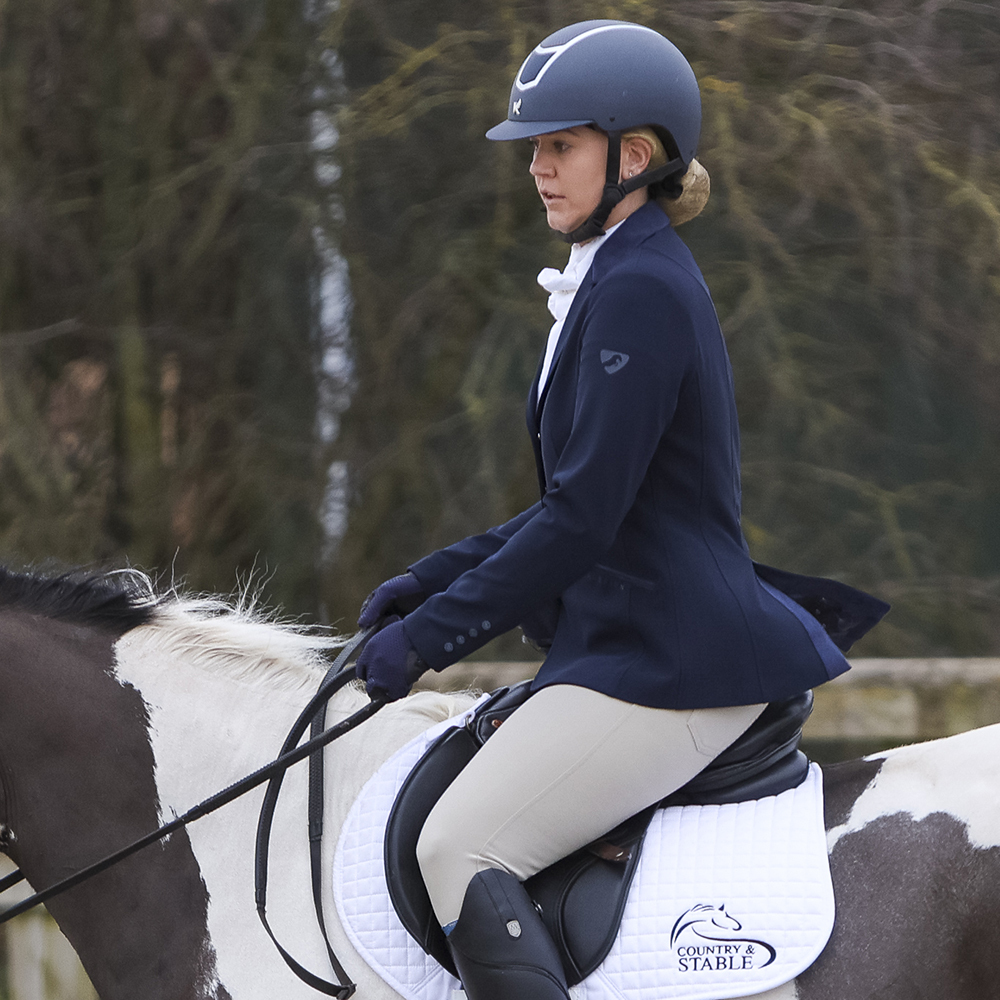
What to Wear for Dressage
Rider:
- Protective riding hat (black or dark blue, tagged)
- Riding jacket or show coat in conservative colours
- Tie, collar, or correctly fastened stock
- Riding gloves (mandatory)
- White, buff, brown, black, navy or grey breeches
- Plain black or brown boots, topped boots, or full-grain smooth leather gaiters with matching boots
❌ Whips are NOT permitted in the dressage phase
Horse:
- Bridle with a bit, browband, and noseband (colours: black, brown, grey, navy)
- English or continental saddle in black, brown, grey, or navy
- Saddle pads in any colour (white, black, or brown recommended for a professional look). If opting to use a dressage saddle, you will need a dressage cut saddle pad too
Dressage items we love!
- Premier Equine Ladies Nera Competition Jacket
- Mountain Horse Diana Breeches
- Charles Owen Halo Riding Hat
- LeMieux Pro-Sport Competition Dressage Saddle Pad
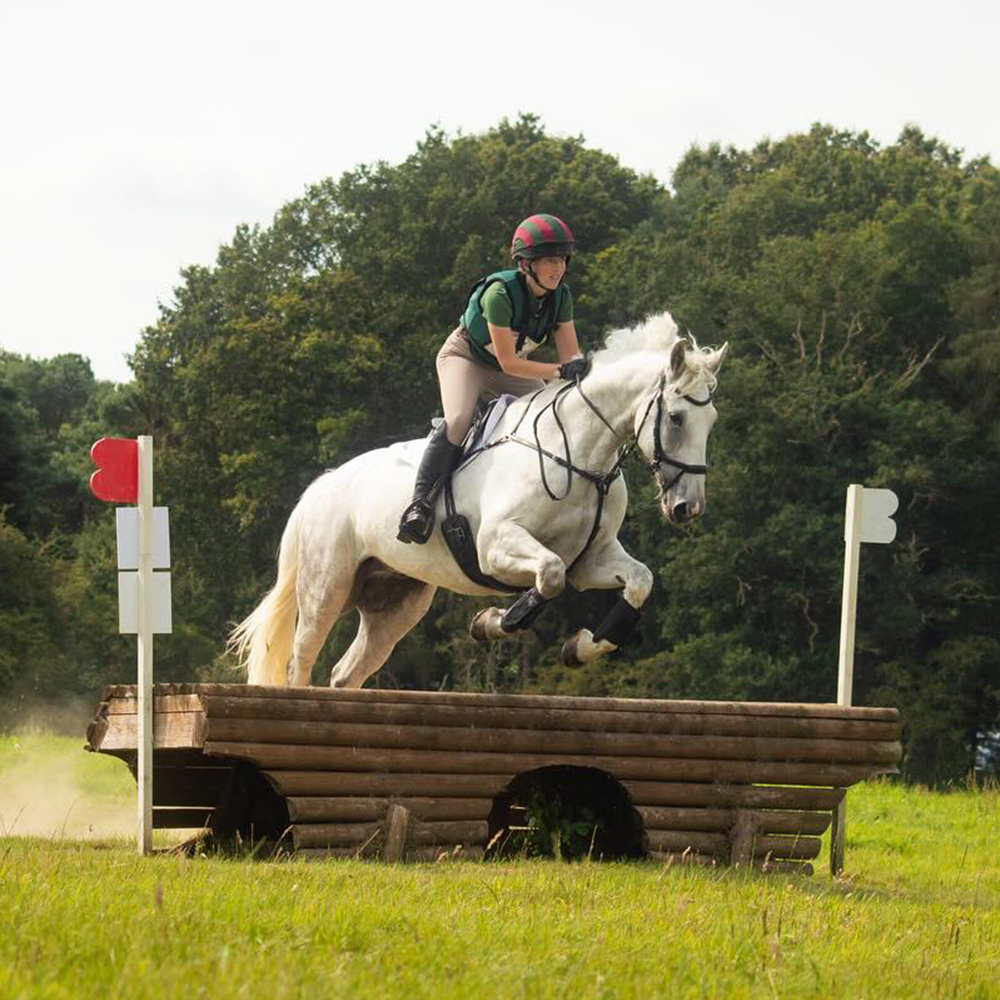
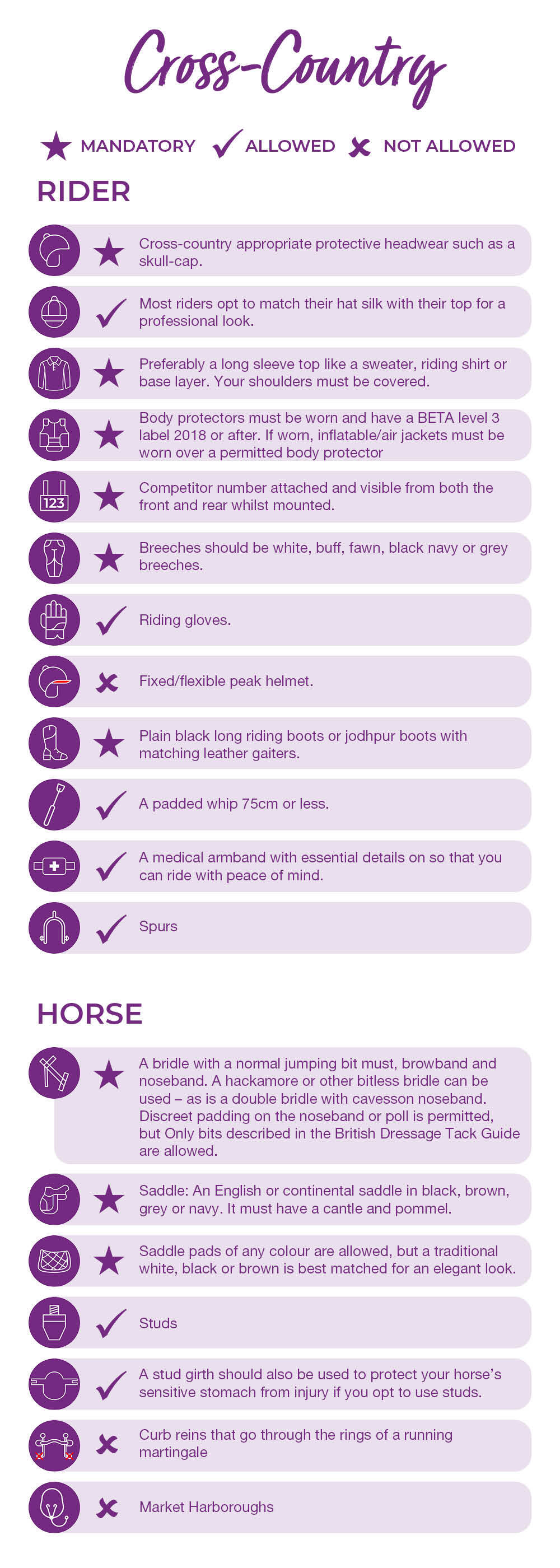
What to Wear for Cross Country
Rider:
- Skull cap and hat silk (fixed-peaked helmets are not allowed)
- Long sleeve top or base layer (shoulders must be covered)
- Body protector (BETA Level 3, 2018 or later)
- Competitor number (visible from front and back)
- White, buff, fawn, black navy or grey breeches
- Riding gloves (recommended but not madatory)
- Plain black long riding boots or jodhpur boots with matching leather gaiters
- Padded whip (max 75cm)
- Medical armband with essential details for safety
Top Tip: Instead of expensive custom cross-country colours, mix and match a bright base layer and hat silk for a budget-friendly statement look. Plus, by opting for a vibrant base layer like LeMieux Chilli for example, your spectators will be able to easily spot you on the course and capture those all-important videos and pictures of you instead of accidentally photographing your opposition!
Horse:
- Bridle with a normal jumping bit, browband, and noseband (black, brown, grey, navy)
- Studs and stud girth for protection (if you choose to use them)
- If you chose to use a dressage saddle for the first phase, you must switch to a jumping-appropriate saddle for show SJ and XC.
❌ Curb reins passing through running martingales and Market Harboroughs are NOT allowed
Cross Country Items we Love!
- Champion Revolve Ventair Jockey Skull with MIPs
- Champion Titanium Ti22 Body Protector
- Premier Equine Competition Bib
- LeMieux Isabelle Full Seat Breeches
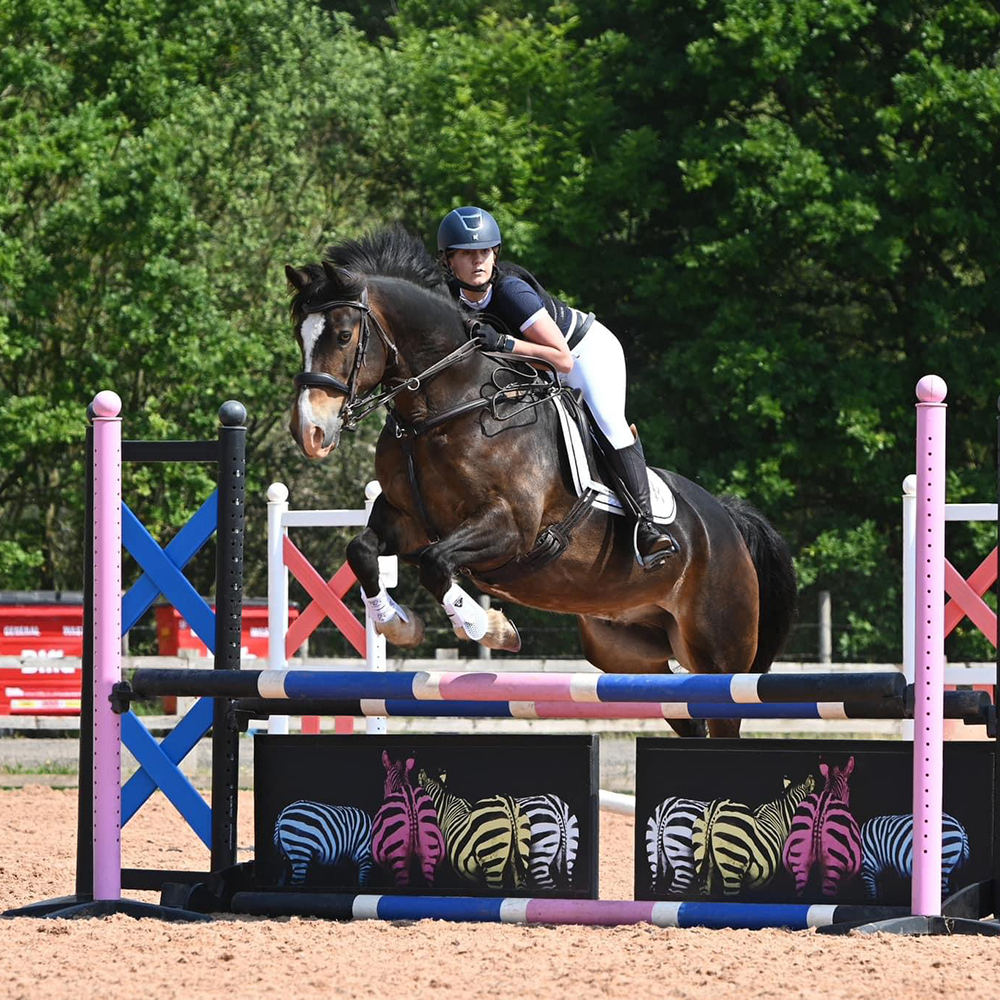
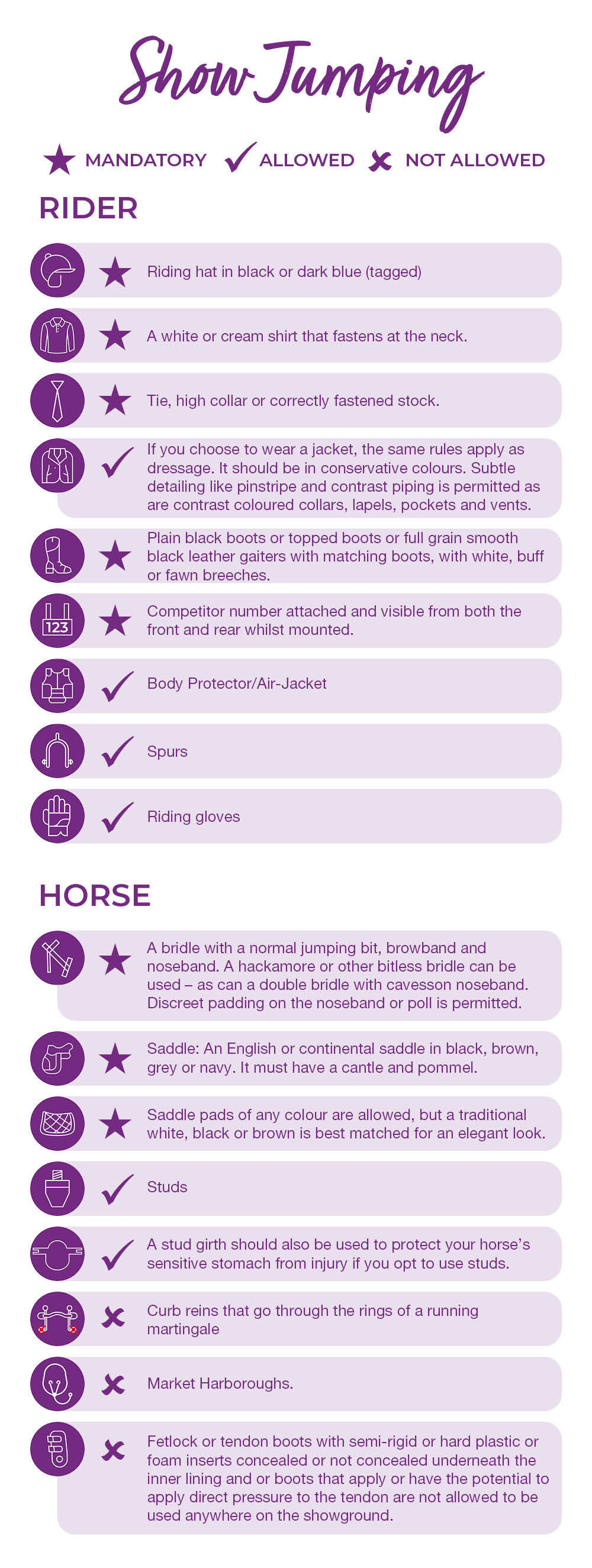
What to Wear for Show Jumping
Rider:
- Protective riding hat (black or dark blue, tagged)
- White or cream shirt (fastened at the neck)
- Tie, high collar, or correctly fastened stock
- Conservative-coloured jacket with subtle detailing permitted
- Plain black boots, topped boots, or full-grain smooth black leather gaiters with matching boots
- White, buff, or fawn breeches
Horse:
- Refer to cross-country tack
- Tendon/fetlock boots
❌ Important: Fetlock or tendon boots with semi-rigid/hard plastic or foam inserts that apply pressure to tendons are NOT allowed.
Show Jumping Items we Love!
- Pikeur Pique Show Shirt
- Ariat Heritage Contour Tall Field Boots with Zip
- LeMieux Soft-Shell Anti Slip cc Saddle Pad
Eventing Gear for All Three Phases
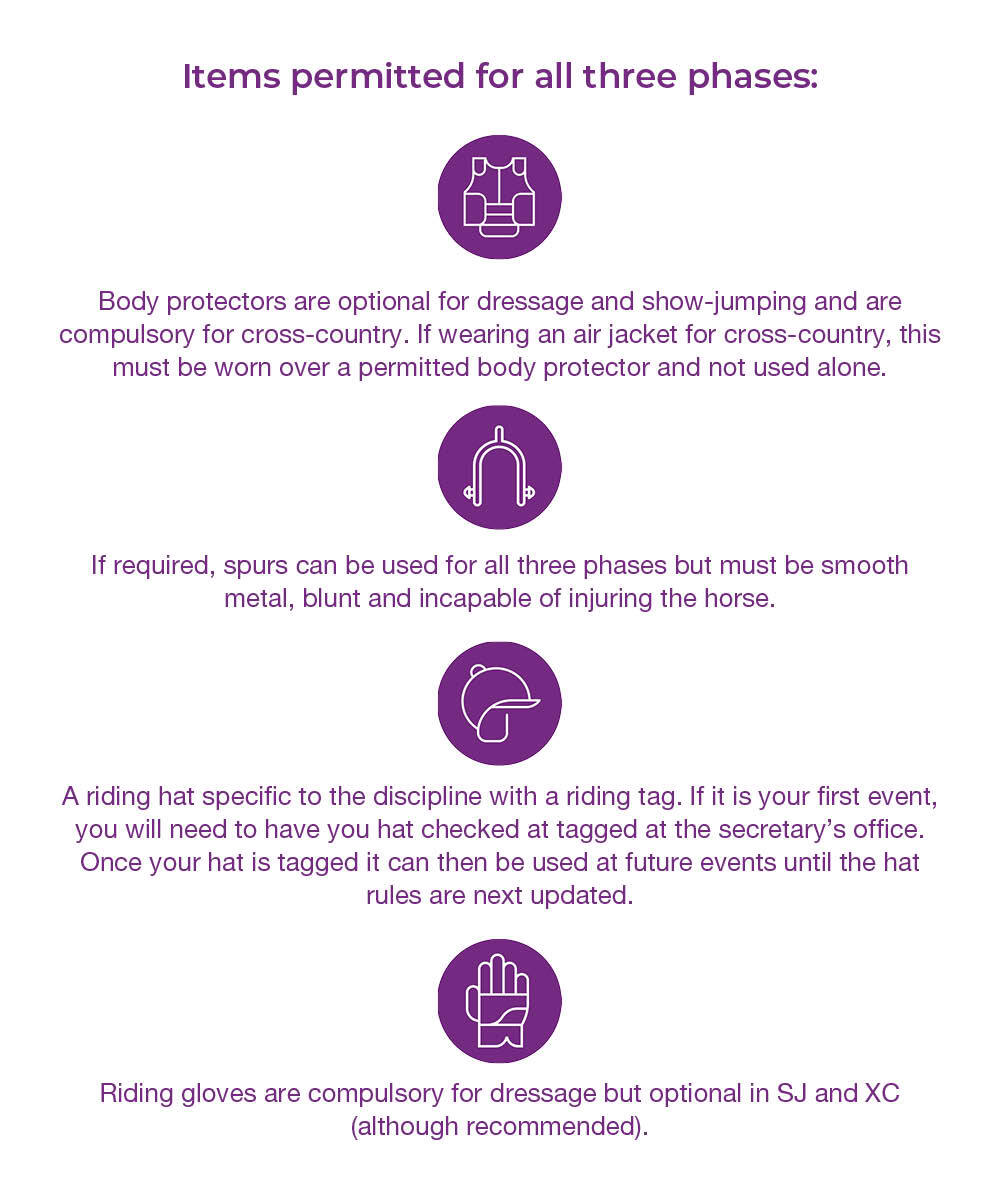
- Competitor Number: Must be visible from the front and rear.
- Body Protector: Optional for dressage and show jumping, mandatory for cross-country.
- Air Jackets: Allowed only over an approved body protector for XC. Can be worn without a body protector for dressage and show jumping phases if the rider chooses to use one.
- Spurs: Must be smooth, blunt metal, and incapable of injuring the horse.
- Gloves: Mandatory for dressage, optional for show jumping and cross-country.
Tip: Although not compulsory, a hair net can be used in all three disciplines to keep your hair out of your face and to keep a tidy, professional look.
Young Riders (Under 16) Competing up to BE105
- Allowed to wear jodhpurs with jodhpur boots or plain black/brown chaps with matching boots.
Final Checklist & Where to Shop
Eventing preparation can be stressful, but our Eventing Rider Wear and Horse Tack Guide ensures you have everything ready for competition day. If you're still unsure, download the detailed 2025 British Eventing Handbook to find out exactly what is and isn't permitted.
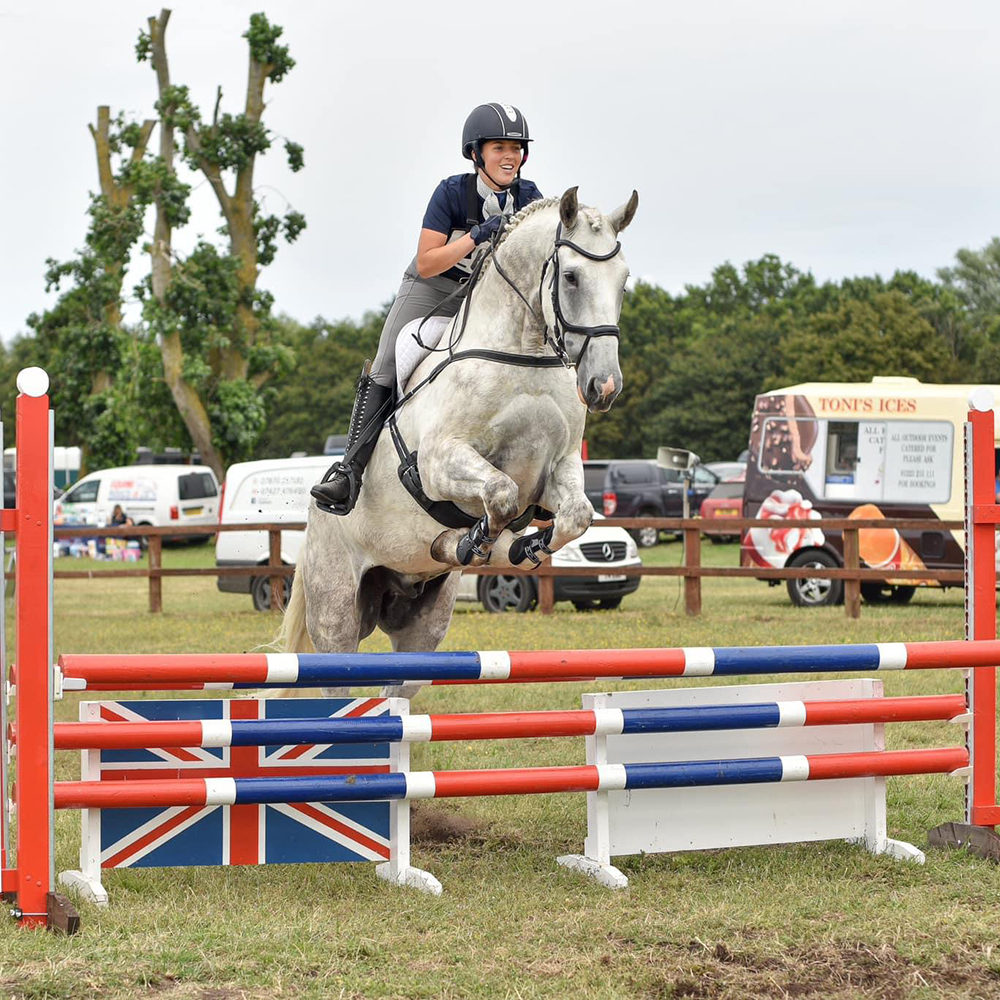
Gear up for event season with the best riding clothes and horse tack today! Shop high-quality equestrian competition wear online at Country & Stable and enjoy free delivery on orders over £50 and free returns.*
